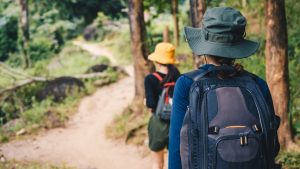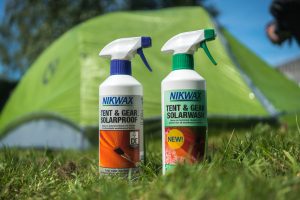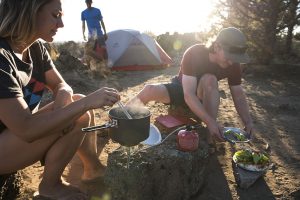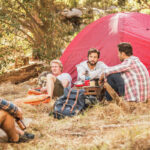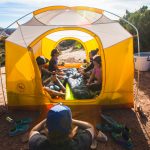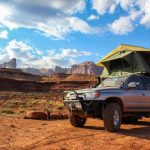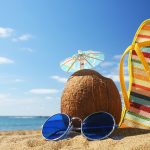Many people enjoy backpacking and hiking. However, one of the challenges is finding clean water to drink when you’re out in nature. That is why it’s important to carry a water filter with you when you go on your next trip.
There are many different types of filters available for purchase including gravity filters, pump-type filters, and more. In this article, we will take a look at the best backpacking water filters that are currently available in 2022 and provide buyer’s guide recommendations so that you can find the right model for your needs.

Table of Contents
Quick Recommendation
| RANK | PICTURE | NAME | RATING | SHOPS |
|---|---|---|---|---|
| Best Overall | 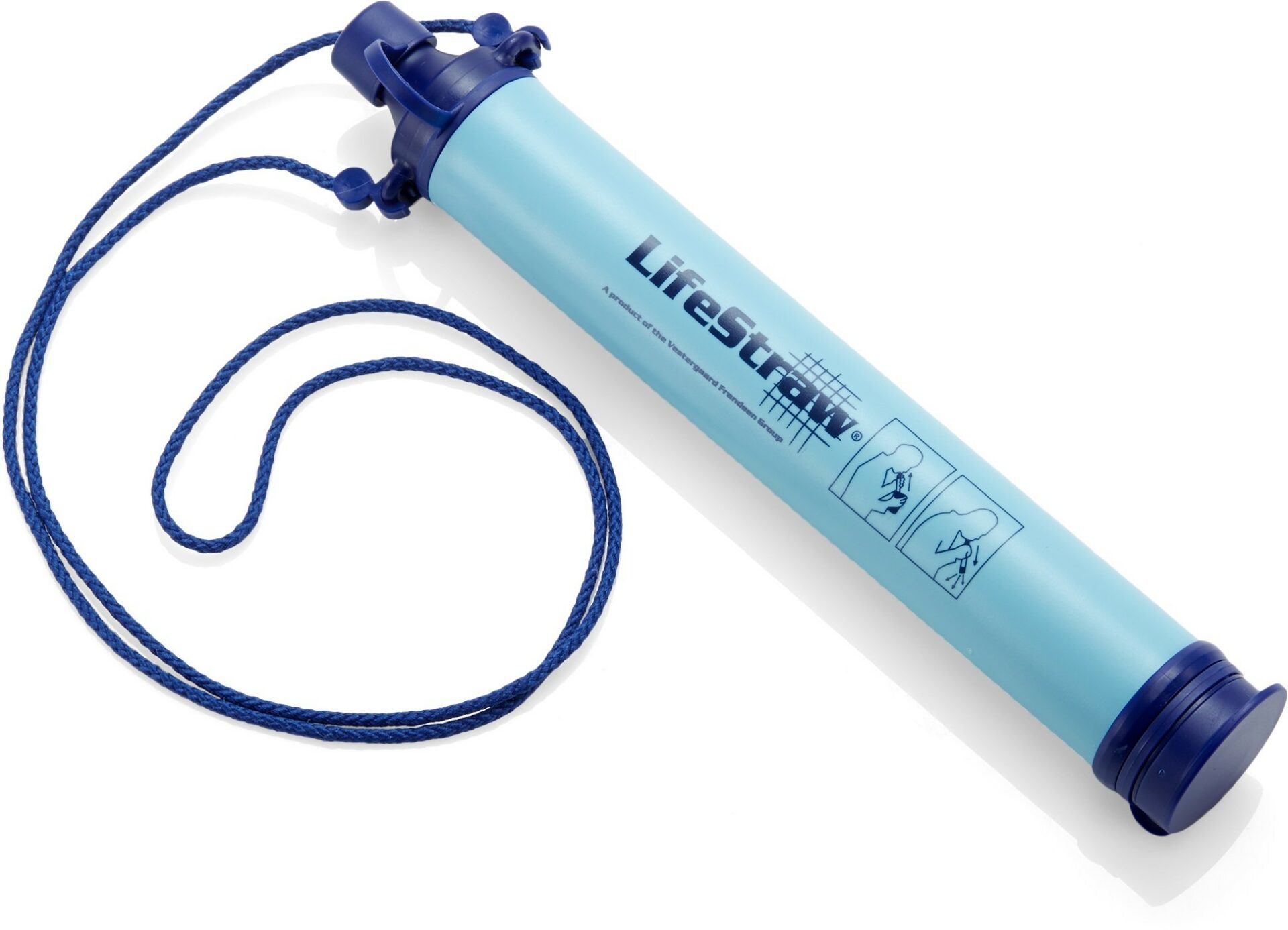 |
LifeStraw Water Filter
|
 |
|
| Editor Choice | 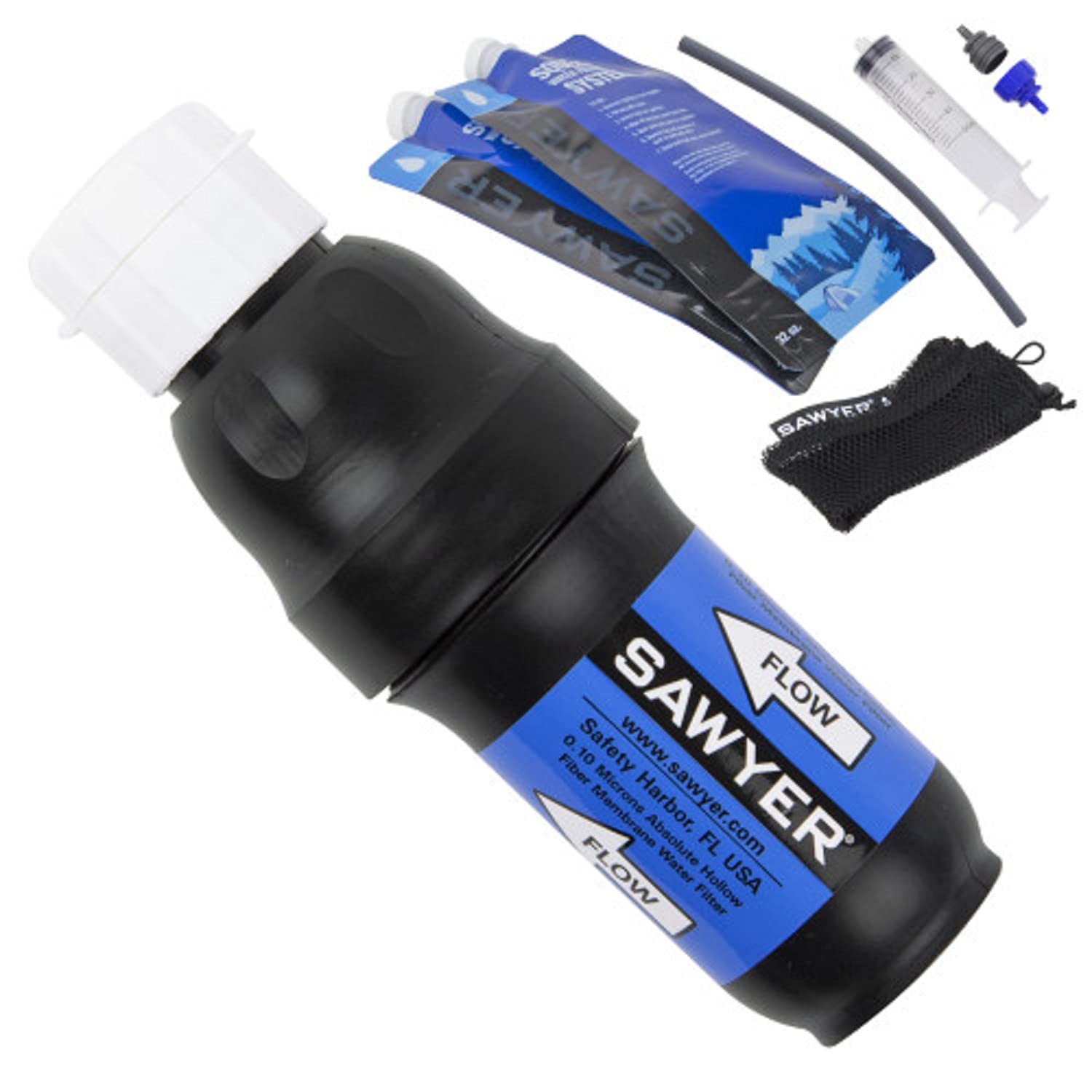 |
Sawyer Squeeze
|
 |
|
| Editor Choice | 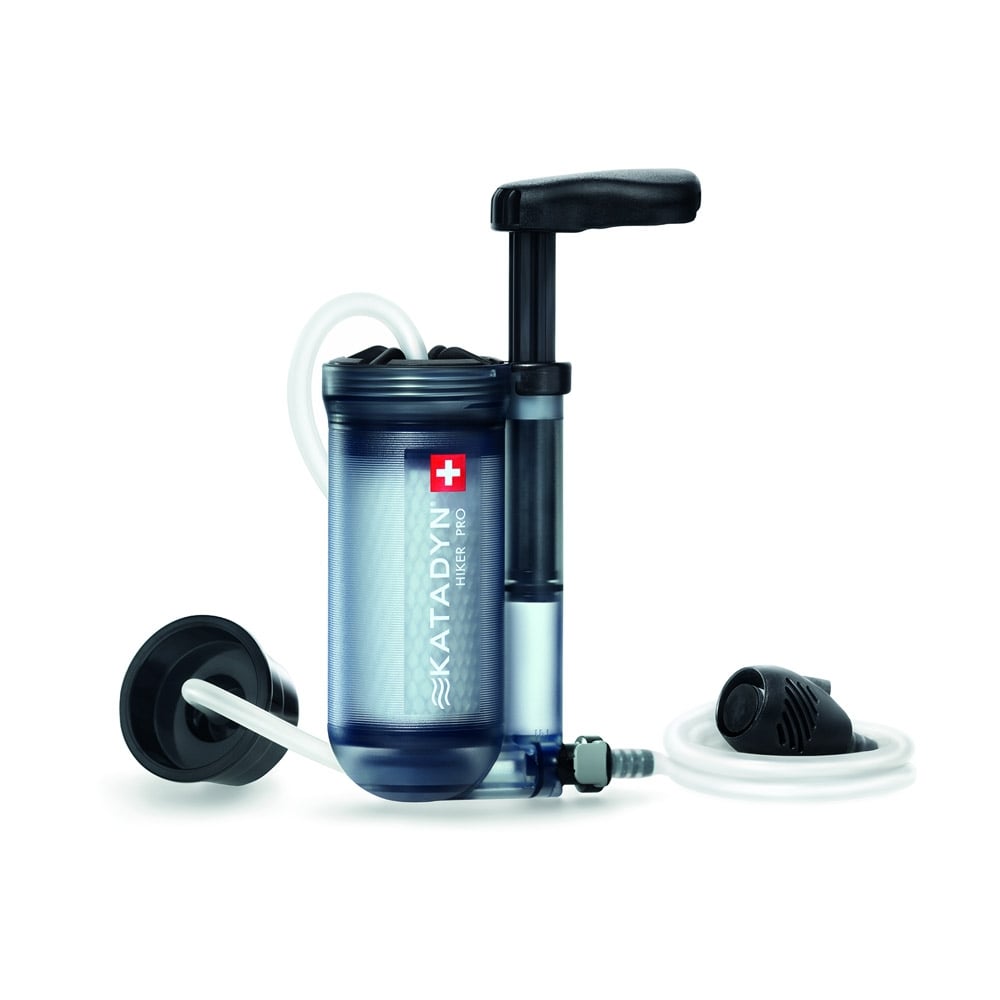 |
Katadyn Hiker Microfilter
|
 |
|
| Best Gravity |  |
Platypus GravityWorks 4L
|
 |
|
| Best Pump | 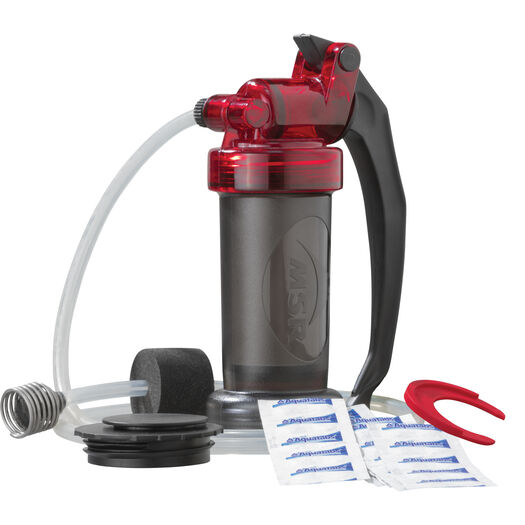 |
MSR Guardian Purifier System
|
 |
Sawyer Squeeze

Price: 95.5$
Type: Squeeze
Filter Material: Hollow Fiber
Weight: 3 ounces
What we Like: Compact, Good filtering ability, Durable, Suitable for many different bottles, Many accessories included
What We Don’t Like: The included carrying bag is less durable
Review: The Sawyer Squeeze is a compact water filter that is suitable for many different bottles and containers. It weighs only three ounces, making it very easy to carry in your backpack when you’re hiking or backpacking with friends and family members. The included drinking pouch makes it simple and convenient to drink from the filter while on the go without having to stop and take off your pack.
The Sawyer Squeeze can also be attached to most hydration packs, making it a great choice for long-distance hikers or backpackers. It features a durable design that is capable of filtering out many different types of contaminants, including bacteria, protozoa, and cysts.
Platypus GravityWorks 4L

Price: 120$
Type: Gravity
Weight: 11.64 oz
Filter Material: Hollow Fiber
What we Like: Closed system, Comes with a bag, No need to buy extra accessories, Quality filter, High performance
What We Don’t Like: Need to find a suitable hanging position
Review: The Platypus GravityWorks is one of the best backpacking water filters that you can buy. It features a high-performance hollow fiber filter that effectively removes protozoa, bacteria, and sediment from the water.
This model comes with two bags (two liters each) so it’s easy to store clean drinking water for later use or share with a friend. The Platypus GravityWorks is a great choice if you’re looking for an affordable and easy-to-use gravity filter that effectively removes harmful substances from the water.
MSR Guardian Purifier System

Price: 350$
Type: Gravity
Weight: 2.19 pounds
Filter Material: Hollow Fiber
What we Like: Compact, Quality filter, Enduring Long use time, Unique self-cleaning mechanism
What We Don’t Like: Expensive
Review: The MSR Guardian Purifier System is a high-quality gravity filter that is perfect for backpacking trips. It features a compact and lightweight design, making it easy to transport. The filter also has a long use time, so you don’t have to worry about constantly replacing the filters. Additionally, the self-cleaning mechanism keeps the filter working at optimal levels. The only downside to this product is its high price tag.
Katadyn BeFree

Price: 45$
Type: Squeeze
Weight: 2.24 oz
Filter Material: Hollow Fiber
What we Like: Can be folded, Compact, Small filter screen only 0.1 microns, Easy to clean
What We Don’t Like: Short shelf life
Review: The Katadyn BeFree is a great option for those looking for a compact and lightweight water filter. This model can be folded up to fit in your pocket, and the small filter screen only allows 0.01 microns through, making it ideal for removing bacteria and protozoa. It’s also easy to clean – just give it a quick rinse and it’s good to go for your next trip. However, the BeFree has a shorter shelf life than some of the other filters on this list, so you’ll need to be sure to replace the filter cartridge regularly.
LifeStraw Personal Water Filter
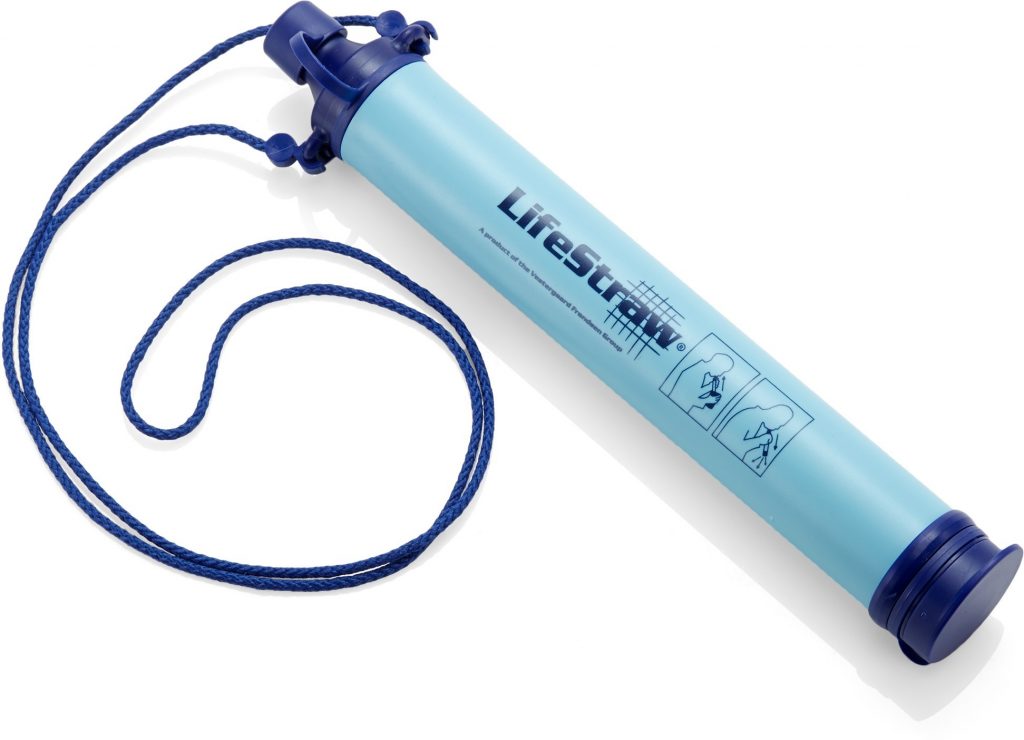
Price: 30$
Type: Squeeze
Weight: 1.6 oz
Filter Material: Hollow Fiber
What we Like: Comfortable, Compact, Quality filter, High usage time
What We Don’t Like: Can only be used for 1 person
Review: The LifeStraw Personal Water Filter is a simple, compact water filter that can provide you with safe drinking water while backpacking. This unit works by filtering out 99.99% of bacteria and protozoa found in contaminated water sources so that you have clean drinking water wherever your travels take you. It’s extremely lightweight at only 16 ounces and has a comfortable handle so that you can easily carry it in your pack. There is an included lanyard and there are also adapters available to attach the water filter to a hydration bladder hose or sports bottle.
This compact personal water filtration device would be ideal for backpacking, hiking, camping trips, travel abroad, etc., and it has a high usage time of up to 1000 liters.
MSR Trail Shot
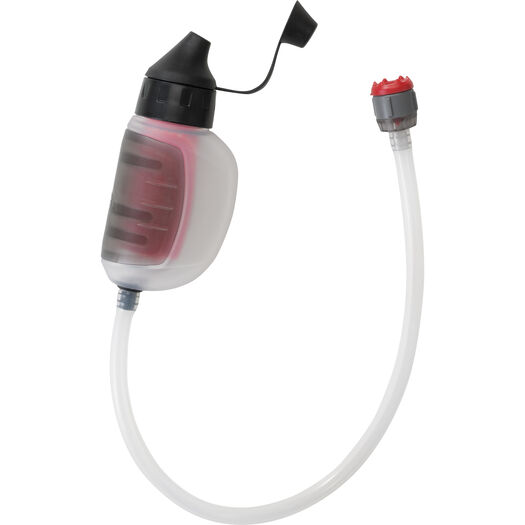
Price: 50$
Type: Pumps
Weight: 5.44 oz
What we Like: Easy to use, Quick water filter, Good filtering ability, High shelf life, Compact
What We Don’t Like: It may not be durable enough for backpacking
Review: The MSR Trail Shot a water filter is a great option for those looking for an easy-to-use and compact water filter. This model uses a pump to filter water, which makes it quick and easy to get clean drinking water. The Trail Shot also has a good filtering ability, meaning that it can remove most of the contaminants from your water. Additionally, this model has a high shelf life, meaning that it will last for a long time even if you don’t use it often. However, the MSR Trail Shot may not be as durable as some of the other models on this list and is not meant for backpacking.
Katadyn Micropur MP1
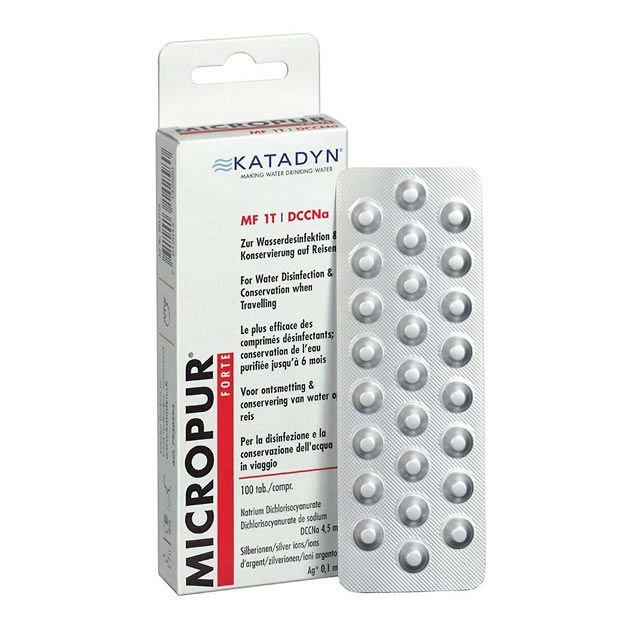
Price: 14$
Type: Chemical
Weight: 0.8 oz
What we Like: Low Price, Good filter, Can handle even protozoa, Simple to use
What We Don’t Like: Can only filter a limited amount of water at a time
Review: The Katadyn Micropur MP-One is a great budget option for those looking for a chemical water filter. It is very small and lightweight and can handle protozoa as well as bacteria and viruses. The only downside is that it can only filter a limited amount of water at a time.
SteriPEN ULT-MP-EF SterPen Ultra UV Water Purifier
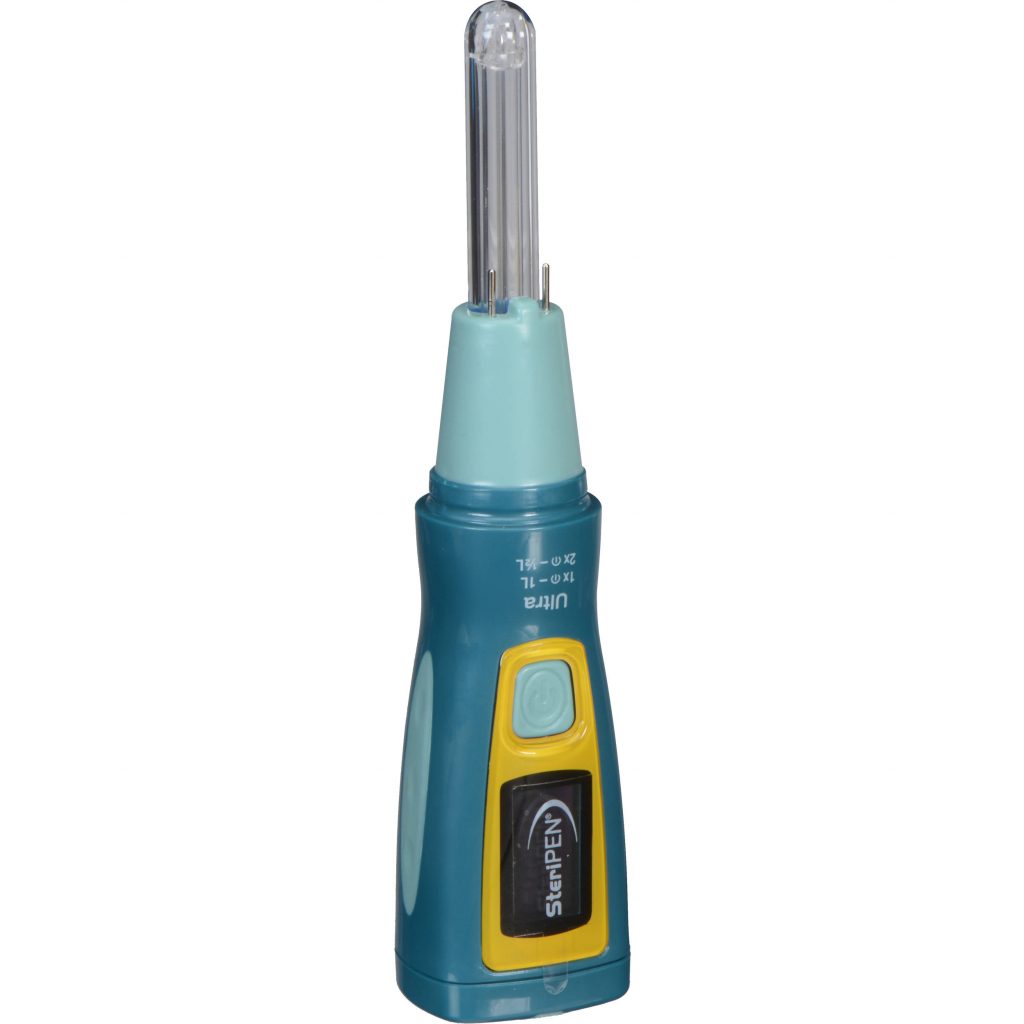
Price: 110$
Type: UV lights
Weight: 4.8 oz
What we Like: Powerful UV rays, Long battery life, High battery life, Various charging sources, OLED screen
What We Don’t Like: Pre-filter needed
Review: The SteriPEN Ultra is a sleek and lightweight handheld water purifier. This model uses ultraviolet light to kill harmful bacteria in your drinking water. It has four different operating modes including mixed, outdoor, travel, and tourism mode for when you are trekking or traveling overseas where the risk of cryptosporidium contamination is high. The ULT-MP-EF has a battery life of up to 100 hours when in mixed mode, with each hour equaling one liter. The device charges from multiple sources including USB and solar panels for long trips where you have limited access to power outlets.
This model can be used on any water source even murky or cloudy water which is an advantage over many other models that require clear water. It also has an OLED screen that displays how many liters you have purified since the light was turned on, as well as your current battery life so you can plan accordingly.
The ULT-MP-EF is a great choice for backpackers looking to purify their drinking water quickly and easily while effectively killing harmful bacteria.
However, it should be noted that this model does require a pre-filter which is not included in the purchase price and can add an extra step to your water purification process.
LifeStraw Flex Gravity Filter

Price: 55$
Type: Fusion
Weight: 6.9 Ounces
What we Like: Multi-use, Comes with a 1-gallon bag, 0.2-micron pore size, Carbon fiber capsule
What We Don’t Like: Slow filtering when in gravity filter mode
Review: The LifeStraw Flex Gravity Filter is a gravity-style water filter that comes with a large capacity bag for gathering and filtering fresh, clean water. You can also use this model to treat murky or silty water by filling up the included pouch from your dirty source of drinking water. The 0.02-micron pore size provides you with clean and safe drinking water, while the carbon fiber capsule helps to reduce bad tastes and odors. This filter is also capable of filtering out 99.99% of bacteria and protozoa making it a great choice for hikers and backpackers.
Potable Aqua Iodine Tablets
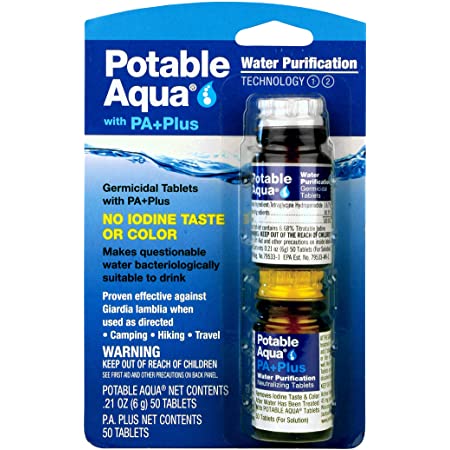
Price: 13$
Type: Chemical
Weight: 0.32 Ounces
What we Like: 100 filter tablets, Fast action, Good removal of bacteria
What We Don’t Like: Not effective on protozoa
Review: The Potable Aqua Iodine Tablets are a good choice for quick water purification. You can drop two tablets in one liter of clear or cloudy water and wait five minutes to drink it since the iodine will kill bacteria but not viruses. The great thing about this product is that you get 100 filter tablets which should last you at least several trips. It also works very quickly and is a good choice if you need to purify water for an entire group of people as well as pets since it contains no chemicals that will harm them.
Katadyn Hiker Microfilter

Price: 75$
Type: Pumps
Weight: 11.04 Ounces
What we Like: Easy operation, 0.2-micron fiberglass filter, Activated carbon layer
What We Don’t Like: Expensive replacement cost
Review: This water filter is great for hikers because it’s lightweight and easy to carry. It has a 0.02-micron pore size, activated carbon layer, and weighs only 11 ounces so you can easily fit it into your hiking bag without any issues. The pump works well with one hand operation which makes it simple to use when you’re out in the wilderness. It’s designed for hikers and backpackers but can also be used at home or while traveling.
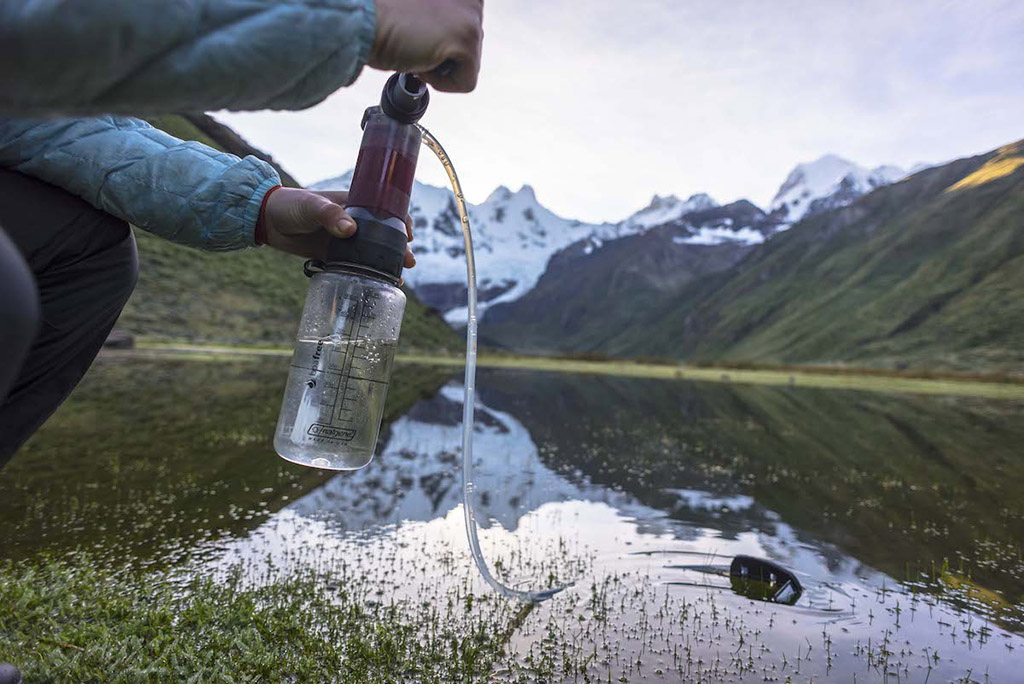
How Water Filters and Purifiers Work
There are many different types of water filters and purifiers available for purchase. The first thing you need to know is how they work so that you can choose the right one for your needs.
Types of filters and purifiers
- Sediment Filters: These filters are designed to remove large particles, sediment, and dirt from the water. They are ideal for use in camping and hiking situations when you want to drink from a stream or other untreated source of water.
- Gravity Filters: Gravity filters allow you to collect and filter water from an untreated source. They use a pump or other mechanism to force the water through the filter so that contaminants are removed before reaching your cup. This type of system is often preferred because it doesn’t require any work on your part except collecting and pouring out the filtered water once it has been produced.
- Chemical Treatments: Chemical treatments kill viruses and bacteria in the water by applying a chemical to it such as iodine or chlorine dioxide tablets. This is often used for emergency situations when you don’t have access to clean drinking water but need it quickly. It can also be used as an effective backup method so that you can use any water source, even if it is questionable.
- Ultraviolet Lights: Ultraviolet lights use radiation to kill viruses and bacteria in the water. They are a good choice for hikers and campers who want a lightweight, compact option for purifying their water.
- Pump Filters: Pump filters are larger and heavier than some of the other types of filters but they offer the advantage of being able to filter a large amount of water quickly. They use a hand pump to force the water through the filter, removing sediment, dirt, and other contaminants in the process.
- Carbon Filters: Carbon filters are used to remove chlorine and other chemicals from the water as well as certain types of bacteria and viruses. They are a good choice for people who are concerned about the taste and quality of their drinking water.
Now that you have a basic understanding of how water filters and purifiers work, it’s time to choose the one that is best for you.
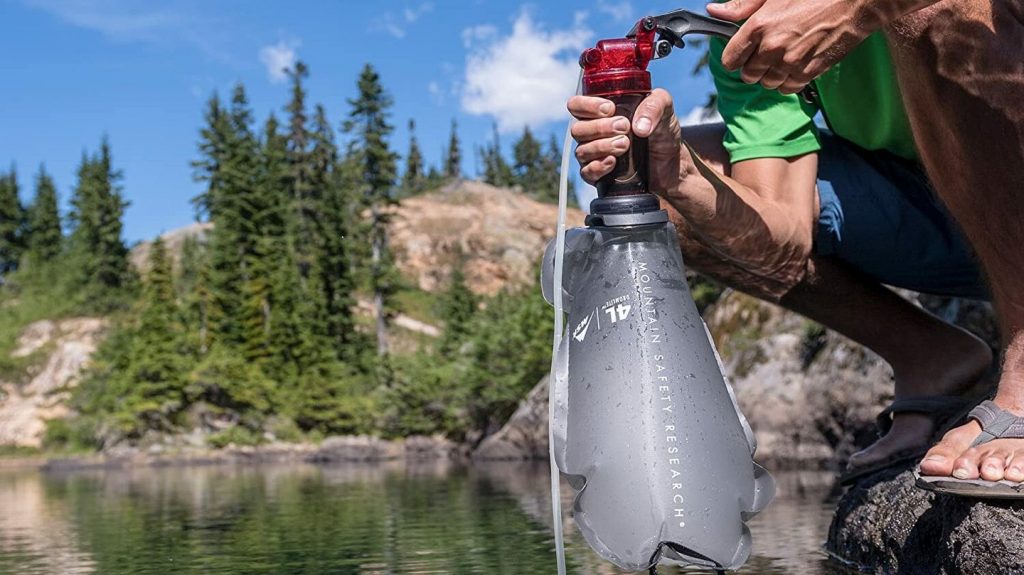
How to Choose a Backpacking Water Filter
When choosing a filter for backpacking, there are several factors to consider. Here are some of the most important things to think about:
- Purpose: What will you be using your water filter for? If you’re mainly looking for a filter to drink from, then you’ll want one that is small and lightweight. If you’re also looking to use the filter for cleaning dishes or washing clothes, then you’ll need a model that is larger and more durable.
- Capacity: How much water do you need to filter at once? Some filters are designed to handle just a few ounces of water while others can process several liters in a single pass.
- Weight: How heavy is the filter? The lighter the filter, the easier it will be to carry with you on your trip.
- Ease of Use: Some filters are more complicated to use than others. If you don’t want to spend a lot of time fiddling with your filter, then choose a model that is easy to use.
- Price: Water filters range in price from a few dollars for disposable straw-type models up to hundreds of dollars for more advanced systems with replaceable parts. If you’re on a budget, then choose a cheaper filter but be aware that it will likely require more frequent maintenance and replacement over time.
- Efficiency: How well does the filter remove contaminants from the water? Some filters are better at removing certain types of contaminants than others.
- Filter Longevity: How often will the filter need to be replaced? Some filters last for only a few hundred gallons while others can be used for thousands of gallons.
- Size: The size of the filter container determines how much water it can hold at a time. Choose a model that is large enough to meet your needs but also small and lightweight so that you don’t have trouble carrying it.
- Futures: What features would you like your filter to have? Some filters come with built-in water purification tablets while others have attachments for filtering water from a stream.
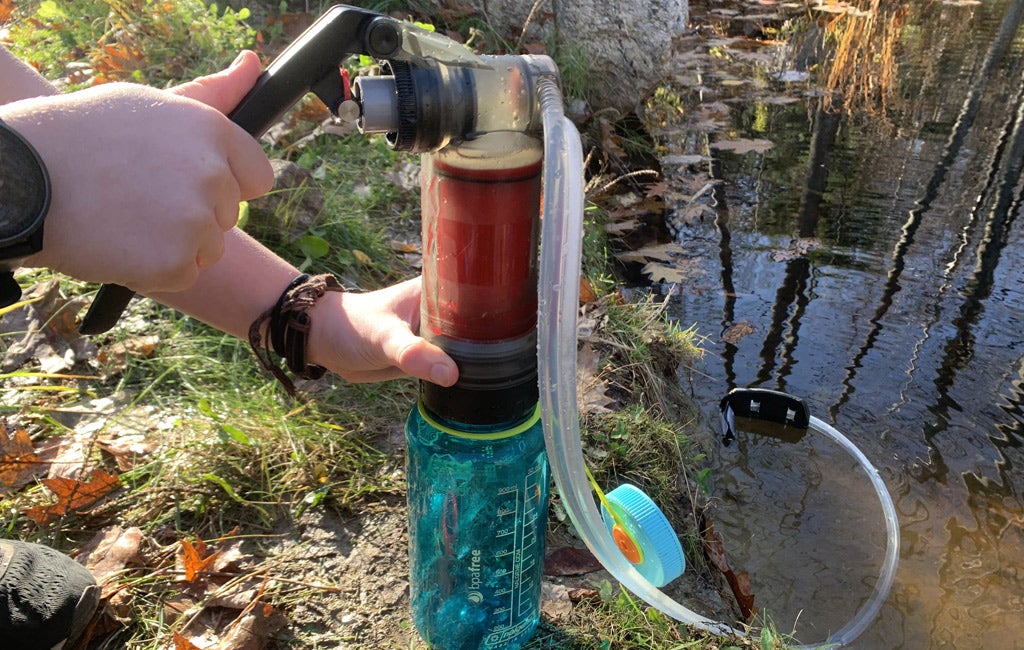
Types Of Waterborne Pathogens
Before we get into the specific water filters that are best for backpacking, it’s important to understand the different types of pathogens that can be found in water. Here are some of the most common ones:
- Bacteria: Bacteria are tiny organisms that can cause a variety of illnesses such as diarrhea, vomiting, and fever. Some bacteria can live in water for several months or even years.
- Viruses: Viruses are much smaller than bacteria and they enter the body through ingestion, inhalation, or contact with broken skin. They can cause flu-like symptoms such as diarrhea, vomiting, fever, nausea, headache
- Protozoa: Protozoa include single-celled organisms such as Giardia and Cryptosporidium. Although these pathogens are usually shorter in length than bacteria, they can still cause severe illness if consumed.
- Cryptosporidium: This is a parasite that causes diarrhea, stomach cramps, nausea, vomiting, and fever. It lives in the intestinal tracts of humans and animals and is resistant to chlorine disinfection.
- Giardia: This protozoan causes diarrhea, stomach cramps, nausea, vomiting, and fever. It can be found in water supplies worldwide and is resistant to most common forms of treatment.
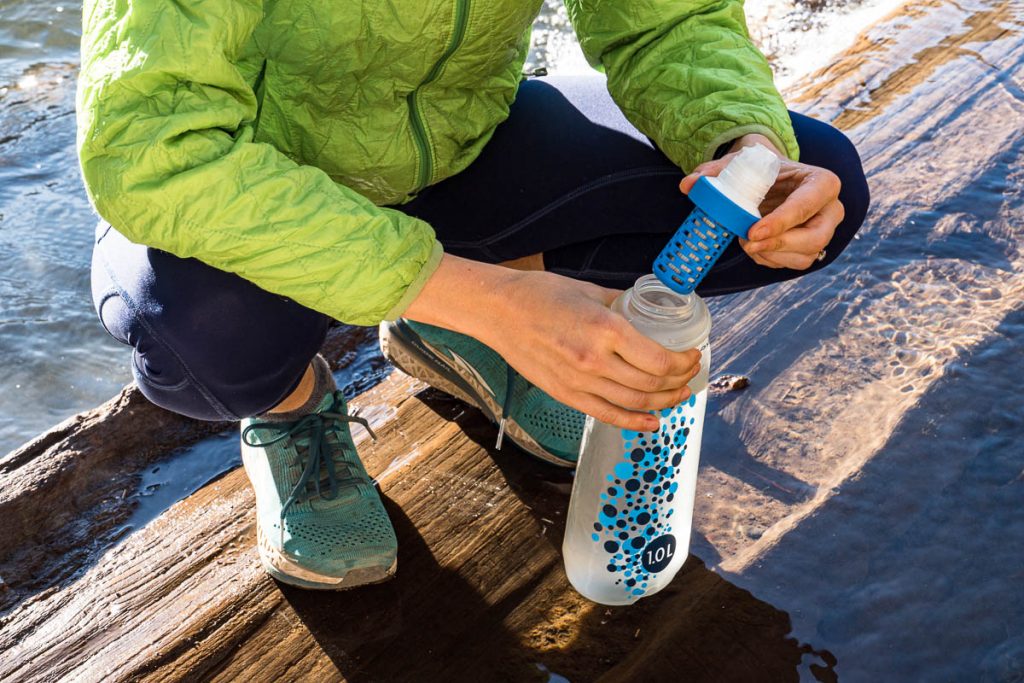
Water Treatment Tips and Best Practices
Now that you know about the different types of waterborne pathogens, here are some tips for how to treat them:
If you’re camping or hiking in a developed area where there is a good chance of coming into contact with contaminated water, always bring along a water filter. Even if the water looks clean, it may still contain harmful pathogens.
If you’re traveling in an undeveloped area that is far from civilization, then boiling the water for at least one minute will kill any harmful organisms. If the water is cloudy or contains sediment, then it should be filtered before boiling.
When using a chemical treatment such as chlorine tablets, wait until just before you plan to use the water. Some chemicals can lose their killing power if they are exposed to light or air for an extended period of time before being added to the water.
To ensure that your filter is working properly, always run a small amount of treated water through it first and wait until nothing comes out before drinking from it. This will also help you familiarize yourself with the proper amount of pressure needed to get water through your filter.
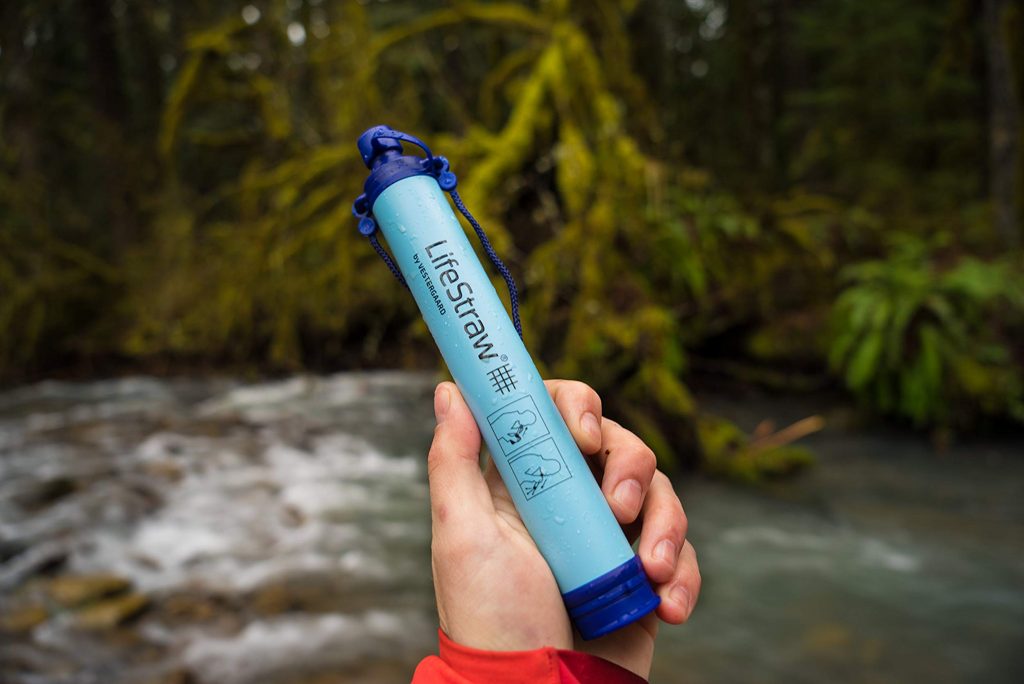
How To Clean Your Water Filter
As mentioned above, some water filters can be used for thousands of gallons before needing to replace the filter cartridge. However, that doesn’t mean you never have to clean your filter. Depending on how often it is being used and where it is being stored when not in use, you should clean your filter about once per month.
Here are the steps to properly clean your water filter:
- Remove the filter cartridge from the housing.
- Use a brush to remove any dirt or sediment that is still inside the housing.
- Rinse your water filter with fresh water and let it dry before reassembling it and storing it away for later use.
Note: You should always refer to the manufacturer’s instructions before doing anything to your water filter.

How We Ranked Our Choices for The Backpacking Water Filters
We took into consideration a variety of factors when we ranked our choices for the best backpacking water filters. These factors included:
Price-to-Value Ratio, Ease of Use, Weight and Size, Filter Capacity, Resistance to Chemicals and Pathogens. Based on these factors, the following water filters were ranked as our Top Picks
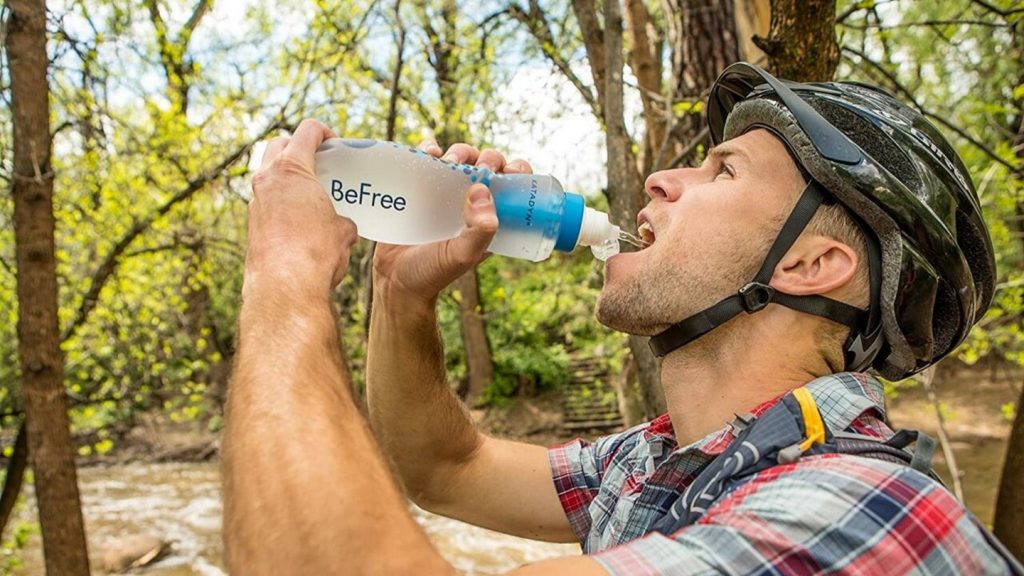
FAQ
Q.What Makes A Water Filter The Best?
A.The best backpacking water filters are those that balance between portability, ease of use, speed of filtering, and cost. There are some great options for lightweight yet powerful filters out there but they tend to be on the more expensive side when compared to the cheap, less effective ones.
Q. What is the best water filter for backpacking?
A. There is no one-size-fits-all answer to this question, as different filters work better in different situations. However, some of our top picks for backpacking water filters include the Katadyn Hiker Pro and the MSR Guardian.
Q. What should I do if I have a stomach bug after drinking contaminated water?
A. If you are suffering from diarrhea, nausea, or vomiting within two weeks of traveling in an undeveloped area where there is no clean potable water source available, then seek medical help immediately. Symptoms such as these can be the sign of something much more serious than just traveler’s diarrhea.
Q. How do I know which water filtration method is best for my camping or backpacking trip?
A. If you’re traveling in an undeveloped area where there are no clean potable water sources available, then boiling the water will kill any harmful microbes that might be lurking inside it. However, if your campsite offers easy access to clean water, then a filter might be a better option.
Q. What should I do if my water filter starts leaking?
A. If your water filter starts leaking, then discontinue use and contact the manufacturer for a replacement. If the leak occurs while you are in the middle of filtering water, then stop what you’re doing and find another way to purify your drinking water before resuming the use of the filter.
Q. How do I know when it’s time to replace my water filter cartridge?
A. Much like water filters, there is no one-size-fits-all answer for how long before a replacement is needed. However, even if you are following all the proper cleaning instructions on your product’s user manual, some cartridges need to be replaced after as few as 100 gallons, while others will last up to 500 or even 1000 gallons.
Q. Is it safe to drink water from a stream or river while camping or backpacking?
A. If you are traveling in an undeveloped area where there is no clean potable water source available, then boiling the water will kill any harmful microbes that might be lurking inside it. However, if your campsite offers easy access to clean water, then a filter might be a better option.
Q. What is the difference between a water filter and a water purifier?
A. A water filter is designed to remove physical contaminants from the water, such as dirt, sediment, and parasites. A water purifier, on the other hand, is designed to remove chemical contaminants from the water, such as bacteria and viruses.
Q. Should I buy a pump filter or a gravity filter?
A. A pump filter is the best option for someone who wants to be able to quickly treat large quantities of water without having to spend much time pumping it through their device before drinking from it. Gravity filters are great when you want to be able to take your time filtering water and you don’t mind having a few minutes of downtime while the filter finishes up.
Q.Is a water filter enough for backpacking?
A. A water filter is the best option for someone who wants to be able to quickly treat large quantities of water without having to spend much time pumping it through their device before drinking from it. Gravity filters are great when you want to be able to take your time filtering water and you don’t mind having a few minutes of downtime while the filter finishes up.
Q.Can bacteria grow in water filters?
A. Yes, bacteria can grow in water filters just like they will grow in any moist environment that is not properly cleaned and dried before storage.
Q.How do you clean a backpacking water filter?
A.You should always follow the cleaning instructions provided by your product’s manufacturer when it comes to how often or if you need to clean your water filter. However, most filters can be cleaned by simply rinsing it with fresh water after each use. You may also need to scrub the filter’s screen and housing every few months using a stiff brush.
Q.Can I drink directly from a water bottle when using a water filter?
A. Yes, you can drink directly from a water bottle when using your device. However, you should still be careful not to get any dirt or sediment into the mouthpiece while doing so because it could end up in your drinking water.
Q.Can I use my backpacking water filter with chemicals?
A. While many models are compatible with chemical treatments like chlorine, iodine, or chlorine dioxide for use in treating water that is heavily contaminated with viruses and bacteria, it is best to check the product manual before using a chemical treatment along with your backpacking water filter.


